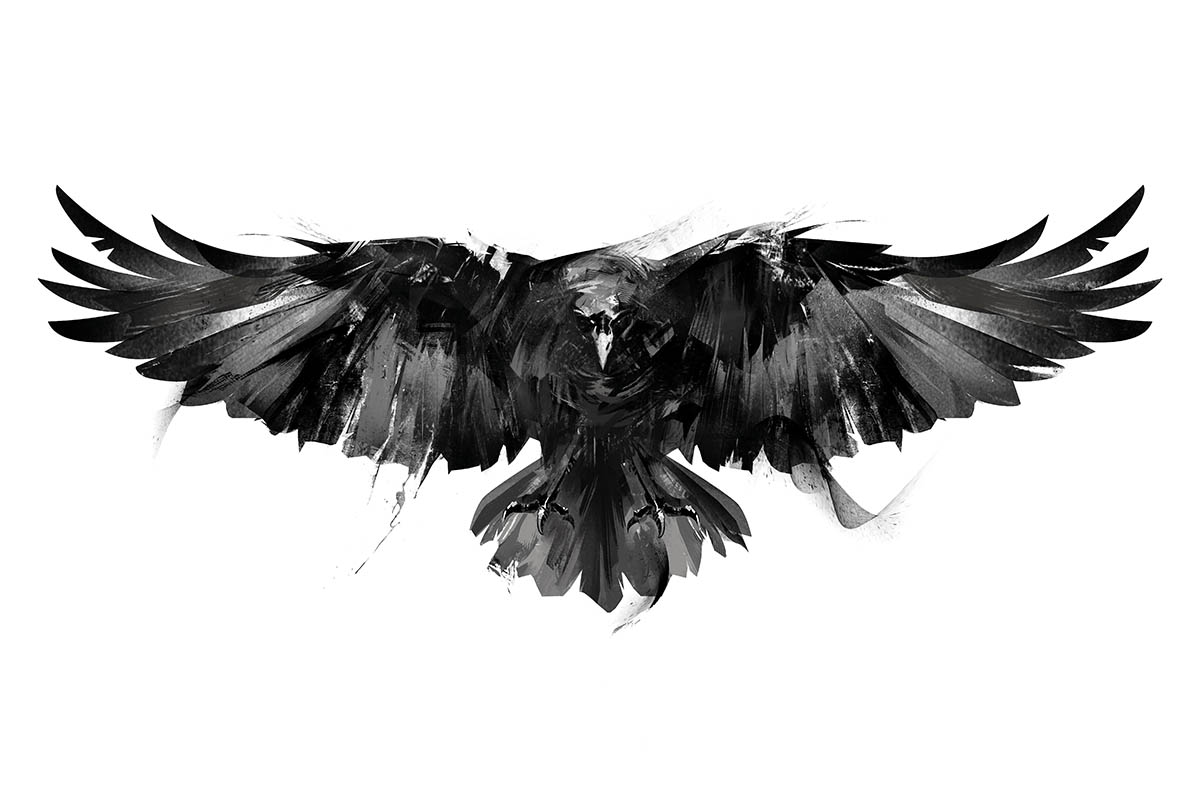
Biologist, writer and professor Rob Dunn explains why intelligent birds such as crows thrive in changing environments and argues we need the same skills to survive climate change
On their own, the changes in average temperatures expected in the coming years are enough to lead to crippling effects on people, cultures, countries and millions of wild species. The world will suffer the deadly heat of our actions and inactions. Unfortunately, these average changes won’t occur in isolation. They will be coupled with increases from one year to the next in the variability of precipitation and temperature. ‘Variability’ sounds both vague and harmless. It is neither; it is, instead, one of nature’s greatest dangers – an elemental threat. Variability is to be feared. Variability needs to be planned for.
Stay connected with the Geographical newsletter!
In these turbulent times, we’re committed to telling expansive stories from across the globe, highlighting the everyday lives of normal but extraordinary people. Stay informed and engaged with Geographical.
Get Geographical’s latest news delivered straight to your inbox every Friday!
Many wild, nonhuman animal species can respond to changes in average conditions by moving along corridors or through the air to places that are more suitable. Scientists have also documented some cases in which species have undergone rapid evolutionary responses to changes in average conditions. Ants living in hot parts of Cleveland have been shown to have evolved a higher tolerance for hot temperatures than their country cousins.
Nature selected against the lineages of ants unable to deal with high temperatures. Natural selection can help species deal with new conditions, as it has done for billions of years, one birth or death at a time. But rapid adaptive change in simple attributes of organisms, such as their ability to withstand heat, is most useful to species when the new conditions in one year are predictive of those they will encounter in the next year. Adaptive changes work well, for example, if the conditions of the future are warm, warmer and then warmer still, but not as well if the future’s conditions are variable – if they fluctuate from warmer, to very cold, to warmer than before and so forth. Yet in many regions, we’re already seeing the latter pattern – long-term warming trends punctuated by unusual extremes. Parts of Texas have seen ‘unprecedented’ heat, drought and fires followed by record cold. Australia has suffered from record droughts, followed by rains that have flooded cities.
So what kinds of adaptations might occur in light of variable conditions and what sorts of species might have those adaptations? For which species is variability itself part of their niche? And, importantly, can we learn to be like those species? For animals, a law provides the answer to these questions. It’s the law of cognitive buffering, whose basic idea is that animals with big brains are able to use their intelligence in inventive ways so as to find food even when food is scarce and maybe also warmth when it’s cold and shade when it’s hot.
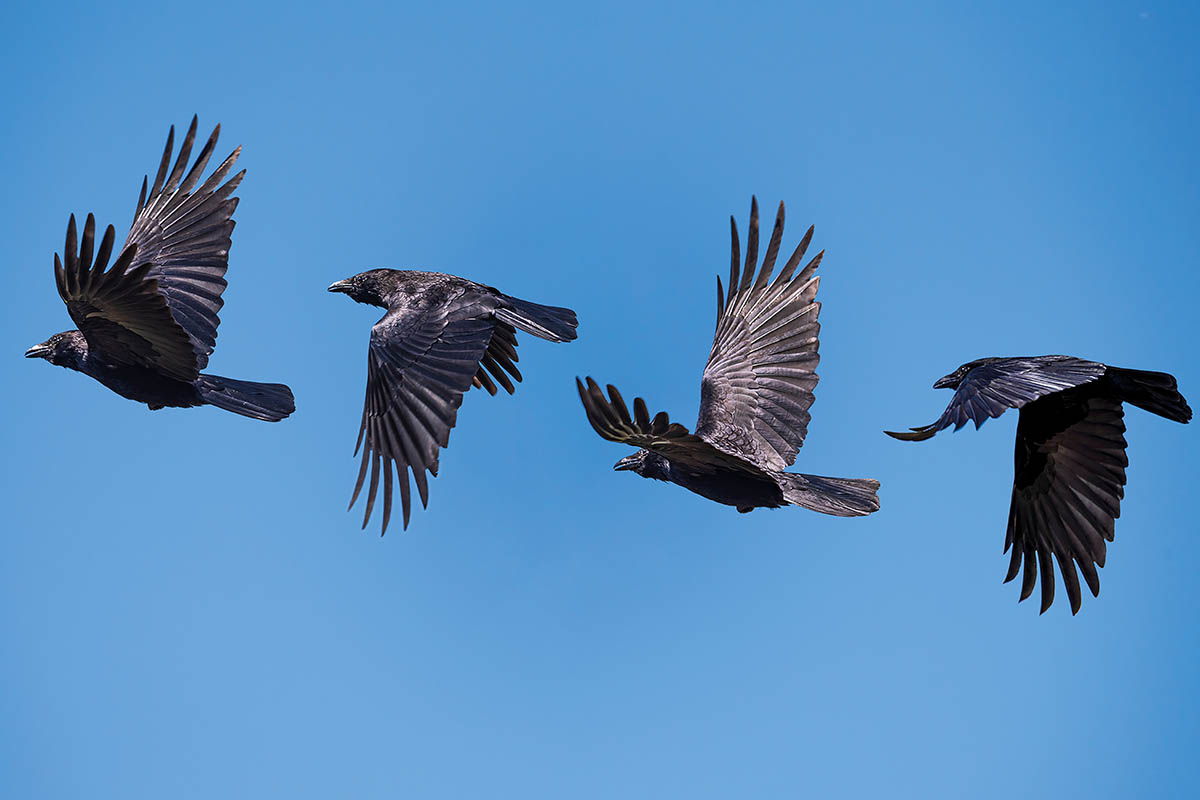
Superficially, this would appear to be a law that bodes well for us humans. We have very big brains relative to our bodies, big enough that our heads nod with their own weight when we’re exhausted. What’s more, those big brains are thought to have evolved, in part, to help cope with variable climates. But whether our big brains will help us in the future is going to depend on just how we use them, whether we and our institutions are more like a crow or more like the dusky seaside sparrow.
To explain the crow and the sparrow, I need to introduce two ways that birds use their brains to confront their daily challenges. Some birds have what I’ll call inventive intelligence, the intelligence necessary to alter their behaviour and, in doing so, invent new solutions to new problems and new conditions. Inventive intelligence helps birds both remember where they have stored food and use that stored food when it’s most necessary. Inventive intelligence also helps birds find novel ways to gain access to food. New Caledonian crows use tools of different sorts to get at food they can’t otherwise reach. In the laboratory, when presented with a food it couldn’t reach with a straight wire, a New Caledonian crow named Betty bent the wire into a hook. In the wild, different populations of New Caledonian crows use different tools to do different things.
However, inventive intelligence isn’t the only way in which birds negotiate their daily challenges. Birds can also have the sort of know-how associated with specialisation. It’s the know-how of being able to do a set of narrow tasks very well. These species, as the writer Annie Dillard put it, ‘grasp their one necessity’ and do ‘not let it go’. Pigeons find their way home even taken thousands of kilometres from their roost. Vultures find dead animals from kilometres away. Quails burst startlingly forth, together, in response to danger. These examples of know-how aren’t inventive; often they don’t even involve the brain so much as the rest of the nervous system spread throughout the body and connected in the most ancient, involuntary part of the brain. Thus, one might call these forms of know-how involuntary or autonomic.
Birds with inventive intelligence are predicted to thrive in a variable future. Birds with specialised autonomic know-how are predicted to suffer. Amazingly, scientists more or less agree on how to measure inventive intelligence, at least in birds. Birds with bigger brains relative to their body size do more inventive things. There are, of course, exceptions. Some big-brained birds aren’t terribly flexible and some small-brained birds find ways to be creative. But broadly speaking, the pattern holds.
Big-brained birds include crows, but also ravens, jays and other species of the family Corvidae, as well as parrots, hornbills, owls and woodpeckers. The average human brain is about 1.9 per cent of human body mass. That of a raven, as reported by Marzluff and Angell in their fascinating book Gifts of the Crow, is 1.4 per cent of its body mass – slightly smaller, but only just slightly. Meanwhile, the brain of a New Caledonian crow is 2.7 per cent of its body mass. Mammal brains and bird brains are sufficiently different that such comparisons shouldn’t be taken too seriously. Nonetheless, suffice it to say that crows are pretty brainy, akin to ‘feathered apes’, although it’s probably just as accurate to refer to apes as ‘flightless crows’.
Some of the recent research elucidating the law of cognitive buffering was led by my friend and collaborator Carlos Botero. It was through Carlos that I learned about the law in the first place. Carlos grew up in Colombia, stumbling over impediments while looking up at birds. Birds led Carlos to Cornell University in New York and then on to Washington University in St Louis, Missouri, where he’s now an assistant professor. Carlos and his friends and colleagues have studied several kinds of variability faced by birds. One kind relates to the differences in temperature and precipitation within years, which is to say, seasons. Such variability is predictable (it happens every year) and yet still a challenge. Where birds must deal with seasons, Carlos and others have found that, yes, they are more likely to have bigger brains. This is true if one compares different groups of birds, but also within particular groups of birds – for example, among owls. Owl species that live in seasonal environments tend to be especially brainy. Those bigger brains help them to find food where it’s otherwise scarce. Other researchers have shown that the same is true in comparisons among species of parrots.
These patterns can even be seen within species; a recent study by Gigi Wagnon and Charles Brown at the University of Tulsa found that smaller-brained cliff swallows are more likely to die in extreme cold snaps than bigger-brained cliff swallows. Conversely, birds that live in seasonal environments but migrate, and hence escape the consequences of seasonality, not only don’t have big brains but, instead, tend to have especially small brains. They are all wing.
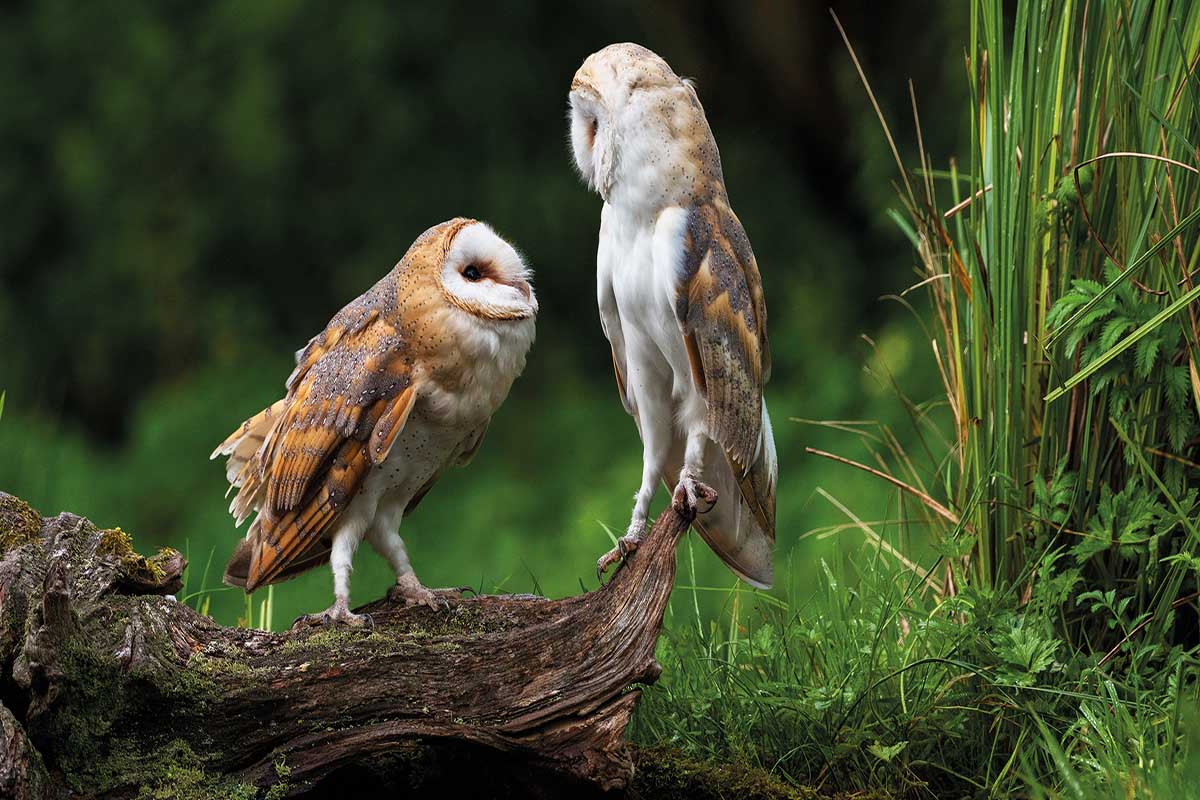
But in some ways, the kind of variability associated with seasons is the easy kind. Even if it is a shock to the system each time it comes – the shock of the first snow, the first spring rain, or the first summer heat – it’s an expected shock. Another kind of variability relates not to differences among seasons but, instead, to differences among years. Such variability is more difficult to deal with because it doesn’t have a pattern. A bird can’t anticipate a dry year. And it’s this unpredictable variability, the unpredictable year-to-year variability in temperature and precipitation, that’s expected to increase in the future. Like seasonal places, places where conditions are different from one year to the next also tend to favour inventively intelligent birds.
Inventive intelligence is likely to help birds by allowing them to find food, even when their ordinary foods are scarce. It helps them diversify the species on which they can prey. Everyone who watches crows with any patience ends up with their own examples of inventive culinary practices. Nor is it just the crows. Blue tits in one neighborhood in Great Britain are reported to have learned to peck through the aluminum caps on milk bottles left on porches to get to the cream. In The Beak of the Finch, Jonathan Weiner reports that this practice, once it was invented, spread through the neighbourhood, bird to bird and porch to porch. When other birds might have been suffering, the inventive blue tits were living on life’s cream.
But eating different foods in different seasons and inventing new ways to get to new foods are just part of how inventively intelligent birds cope with variability. They also store food. For example, Clark’s nutcrackers are able to store piñon pine nuts by burying them. Individual nutcrackers are then able to use their big brains to remember exactly where they buried individual pine nuts. Their brains help them know when to store the nuts, where to store the nuts and where to dig up the nuts they’ve stored. An individual Clark’s nutcracker can remember the location of thousands of individual nuts even ten months after they were buried.
One could argue (although I won’t) about whether what is necessary to remember the location of the nuts is truly inventive intelligence or, instead, a unique form of know-how. But the component of this intelligence that is definitely inventive is the ability to retrieve nuts at some times and not at others, and to choose which nuts to retrieve first and which to save. The birds not only store food, they also carefully ration it. For example, scrub jays, as Marzluff and Angell point out, ‘recover perishable worms sooner than nonperishable seeds,’ which is to say, they employ a sort of avian ‘best by’ label. Nor are these by any stretch the limits of the abilities of inventively intelligent birds. Marzluff and Angell note that both ravens and scrub jays will re-hide food they have stored if they notice that other birds watched where they hid the food in the first place.
If this idea about the buffering effects of intelligence is right, one can make some other predictions. If being able to find diverse solutions to problems helps bird species when conditions are variable, then the populations of big-brained bird species should vary less, from year to year, in variable climates than do those of small-brained birds. Carlos Botero, along with Trevor Fristoe, has shown this to be the case. One might also predict that big-brained bird species should be more likely to thrive when introduced by humans into variable climates. They are. And one should expect big-brained bird species to be more likely to thrive around humans, in cities, where conditions are unpredictable, both from one patch of the city to another and from one time to another. The evolutionary biologist Ferran Sayol, while working with his adviser Daniel Sol and another mentor, Alex Pigot, showed that they are. (The other species that do well in cities are small-brained species with an unusual specialisation: they breed often. Species that breed often survive in cities by making many babies and ‘hoping’ that some will end up in the right place or time to thrive.)
Which bird species suffer with increases in variability? They tend to be the birds with kinds of specialised know-how that no longer match up with whatever the new conditions might be. Such birds try to survive tough times by continuing to do what they’ve always done. Such was the case with the dusky seaside sparrow.
Dusky seaside sparrows lived in marshlands around Merritt Island and along the nearby St John’s River in Florida. For thousands of years, they made perfect use of the marshland’s grass stems for nesting areas and of the insects among the grass stems for food. They had the know-how necessary to know where to be; they had a behavioural tendency to fly, eat, mate, and live only on and around Merritt Island and along the St John’s River.
However, Merritt Island also happens to be where the National Aeronautics and Space Administration (NASA) decided to locate the John F Kennedy Space Center. Both prior to and after NASA’s decision to make Merritt Island the focal point for its space programme, the human use of Merritt Island had come to include efforts to control the island so as to make its conditions more suitable and consistent for humans. The first effort at control was the use of the pesticide DDT. DDT was sprayed over the island in an attempt to control the island’s mosquitoes. That spraying had two effects: it killed large numbers of the insects the dusky seaside sparrows ate and it inadvertently but entirely predictably favoured the evolution of mosquitoes (and presumably some other insect species) resistant to DDT. Spraying started in the 1940s. By 1957, the sparrow’s population had declined by 70 per cent. The sparrows didn’t have the inventive intelligence necessary to find something else. Meanwhile, once the mosquitoes had become resistant to the DDT, new measures were employed to control them. The marshes were ditched or impounded. They were subject to Noachian floods or they were drained and dried or one and then the other. The habitat left that matched the sparrows’ key necessities was thus further reduced and made into ever-smaller island-like patches. The best of those patches shrank further when a highway was built connecting Walt Disney World to the space centre. The highway led to the construction of houses, which led to more flooding and more drainage.
The last dusky seaside sparrow died, in a cage, in 1987. It had been brought in from the wild so that it might be bred with another sparrow species to ensure, in some altered form, its persistence. ‘Ironically,’ as one report pointed out, that caged male, which still sang, ‘was housed at Disney World,’ the ‘world’ that, in some form, had replaced its own.
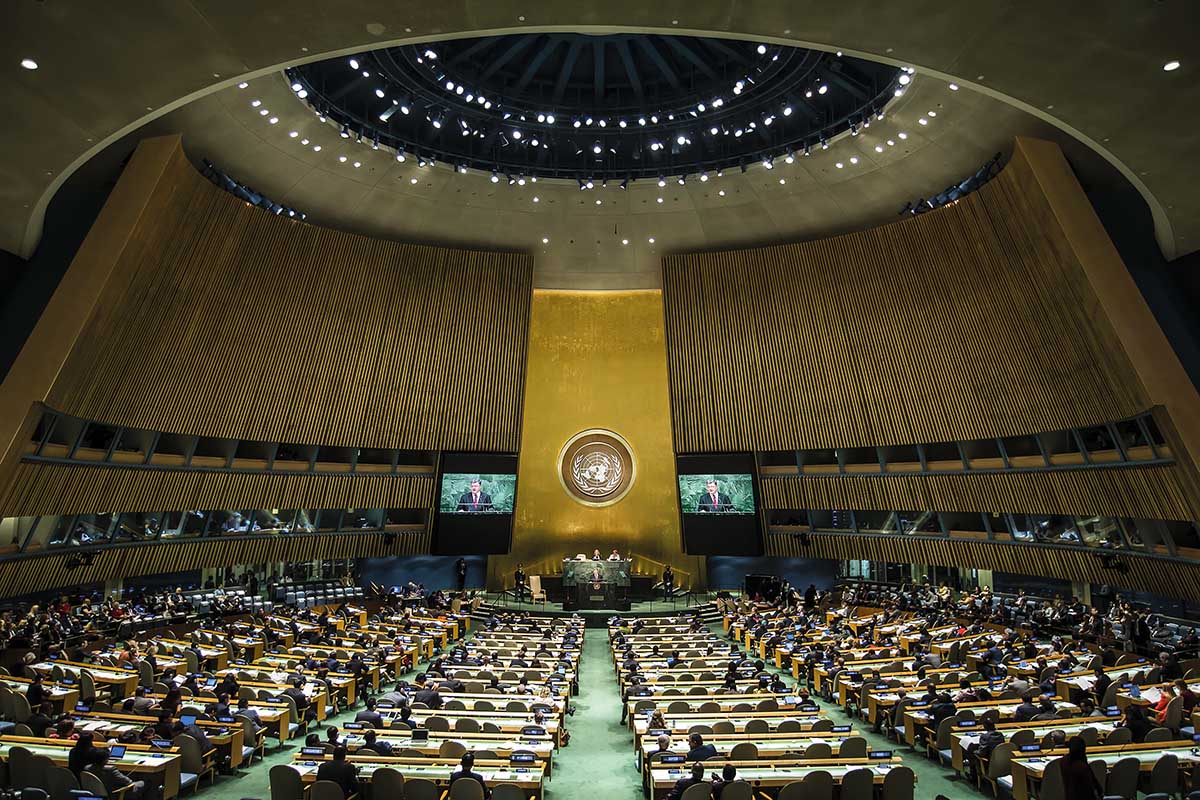
The dusky seaside sparrow isn’t alone in suffering the consequences of the variability that we leave, everywhere we go, in our wake. Insect-eating birds have declined worldwide, in no small part because of declines in insect populations. More generally, however, the many birds with specialised, wondrous ways of being smart in their world through living their one necessary way well, are declining. Hundreds of bird species are now extinct due to the ways humans have altered the world during the great acceleration. Once, when we all lived as hunter-gatherers in small groups, the same sort of intelligence that benefits the crow benefited us. This was especially true in the variable, unpredictable far north and deserts of North America and Australia. In such places and times, humans used their own crow-like inventiveness to deal with new conditions. However, most of us no longer live in the old ways. We are no longer in charge of the means of the production on which we rely. We do not grow our own food. We do not build our homes. We do not construct the transportation systems, waste-treatment systems, or education systems on which we depend, not individually anyway. Most of us couldn’t do these things if our life depended on it, not just because we lack the ability but also because we now live in cities. In cities, we rely on systems to carry out these tasks, systems that are run by humans and yet have, within them, rules that engender a kind of intelligence apart from that imparted by individual human brains. If we are to think about our collective ability to respond to variability in the future, we need to think not about our own brains but, instead, about the brain-like workings of our public and private institutions.
Just as with animals, we can imagine that institutions might have different kinds of intelligence. Many, perhaps most, institutions are focused on being able to do one thing perfectly, or if not perfectly, at least pretty well. They have specialised autonomic know-how. Universities have a tendency toward this model, as do governments. If they are effective, such institutions are effective in light of the average conditions over the last decades, and sometimes longer. They are as specialised on those ‘dominant operating environments’ as the dusky seaside sparrow was on its world of salt spray and grass.

In such institutions, one often hears a kind of patois of stability and specialisation, a patois that emphasises the past. People say, ‘This is the way we’ve always done it’, which is code for ‘This is what’s always worked’. Sometimes what worked in the past isn’t a specific solution but an approach to solving a problem. But even then, the use of such an approach assumes the conditions are similar enough for the approach to be meaningful. As Nowell put it, in a changing world, often ‘the relationship between past action and past outcomes has potentially limited relevance to the current situation’. The ancient rules of cause and effect must be replaced by new rules. Unfortunately, institutions with specialised autonomic know-how are very slow to implement new rules.
Other sorts of institutions may be more versatile. They might respond to changing conditions through inventive intelligence and reinvention. But to be honest, it’s hard to come up with good examples of institutions with inventive intelligence. Maybe this isn’t surprising.
Our institutions, most of them anyway, arose in decades of relative stability. Our global economic system after the end of the Second World War was stable. But more importantly, we’ve become accustomed to climate stability. In the years since the evolution of Homo erectus and, later, Homo sapiens, with their big brains, Earth’s climate has been more predictable than during most other periods of the past 100 million years. This has been especially true over the past 10,000 years, the period during which agriculture, cities and most features of our modern cultures emerged, the period during which the great acceleration occurred. We’ve been sheltered by a lucky stability for which we were unaware that we needed to be grateful.
Put more succinctly, while our species evolved big brains in times of variability and unpredictability, our institutions evolved the kind of specialised know-how ideally suited to conditions like the ones we have long had, conditions that are, increasingly, no more. One might expect that even in times of stability, many institutions would evolve so as to be ready for the change that might come, just as one might imagine that big-brained birds might, sometimes, evolve in invariant climates. One reason this might be rare is that the flexibility and awareness that inventive intelligence in institutions requires might come with costs, much as the big brains of primates themselves are costly. One of those costs is associated with deciding things anew each time rather than just doing what has always been done. This is the cost of time and paychecks, the cost of pausing to reflect and reconsider. In theory, this cost might be reduced if the system itself and its rules were designed to be responsive to changes. But even then, as highlighted by Branda Nowell, there is a cost in the vigilance required to detect when conditions have changed.
Most years, planning for such events entails costs that are made more apparent by the exigencies of quarterly reports. Until an oil company has a spill, its safety measures cost it greatly and return no benefit. Until a meltdown occurs, a nuclear power plant is wasting money training people in the ability to respond to an indication that a meltdown could occur. Or in the example on which Branda focused, until firefighters confront a fire freakishly bigger than has ever been seen, their readiness for such a fire is almost a kind of foolishness. As we look to the future, however, we know enough to be aware that variability will be increasing. As it does, the dangers of ignoring rare events and changes will become greater because they will become more common.
In the wake of the Covid-19 pandemic, it will be useful to study which sorts of institutions were more prepared for the risk that the disease represented. It will be useful because pandemics such as Covid-19 are predicted to become more common. Ecologists who study disease have known for decades that when disruption of natural ecosystems is combined with large-scale farming – or even just caging animals side by side – and globally connected human populations, new parasites will evolve. They’ve argued as much repeatedly. They’ve even pointed to the regions where the origins of such parasites are most common. But the big point is not that the risk of pandemics will increase; it is that the risk of many kinds of problems will increase – floods, droughts, heat waves and pandemics – and so the extra cost of being inventively intelligent is ever less.
If we are to survive variability, our societies will need to be inventive. We can each pay attention to the signs of such inventiveness and to the changes necessary to achieve it, but we can also be conscious of those moments when we hear its absence, those moments when we hear someone, or even ourselves, say, ‘This is what we’ve always done’ or ‘In this situation we’ve tended to…’
But there is also something else. When crows use their inventive intelligence to deal with novel conditions, they do so by finding new ways to find foods and by eating novel foods. In essence, they diversify their diet so that even if a species they rely on becomes rare, some other species might be common. We, too, can take advantage of nature’s diversity, whether in our farm fields or even on our bodies, in order to buffer our risk. We can even do so without being terribly inventive in our intelligence. Carlos Botero has shown that brood parasites, birds that lay their eggs in the nests of other bird species, can benefit from diversity even without being inventive. The subset of brood parasites that does well in variable climates does so by relying on more species of birds as hosts for their eggs, so that if the population of one wanes, another might wax. They put their eggs in more than one type of nest, both so to speak and literally. We, too, can and should build such bet hedging into the ways we depend on other species. The Reverend Henry Ward Beecher once said, ‘If men had wings and bore black feathers, few of them would be clever enough to be crows’. Maybe not. And yet maybe we can still, nonetheless, buffer at least some of what might come.
Excerpted from A Natural History of the Future by Rob Dunn, ©2021 by Rob R. Dunn. Used with permission.
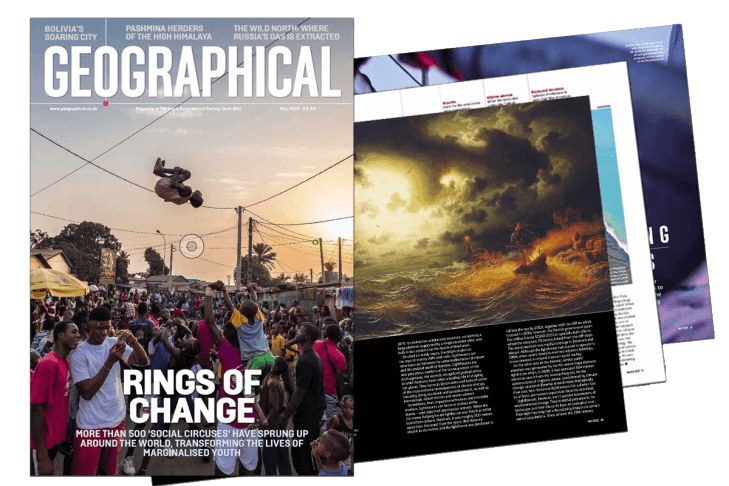
Subscribe to our monthly print magazine!
Subscribe to Geographical today for just £38 a year. Our monthly print magazine is packed full of cutting-edge stories and stunning photography, perfect for anyone fascinated by the world, its landscapes, people and cultures. From climate change and the environment, to scientific developments and global health, we cover a huge range of topics that span the globe. Plus, every issue includes book recommendations, infographics, maps and more!




